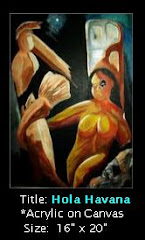As a genre, Film Noir is like pornography. It is hard to define, but you know it when you see it.
Curiously this style of film making, which reached its zenith between the early 1940’s and the late 1950’s, was defined more in retrospect than at the time of its inception.
In 1941, no one said, “Let’s make a film noir”, because the term hadn’t even been coined. It wouldn’t be until 1946 that French Critic Nino Frank used the term film noir (French for “black film”).
While defined by cinema buffs and historians later, many directors of that era claimed to be unaware they were making a `genre’ film.
Film noir, as you might imagine, are dark films, filled with shadows (both literally and figuratively). Stark , usually black and white photography (neo-noir films made in the 1960’s and later are often in color), and sometimes possessing a dreamlike (or nightmarish) quality.
They run the gamut from gangster films, to police procedural dramas, to horror and suspense. It is more about `attitude’ and style than plot. Film Noir often featured less than sympathetic protagonists, anti-heroes, and the underbelly of society.
Film noir was a departure from Hollywood’s normal fare, and often touched (lightly) on subjects that other films never would have dared embrace. Women were often dangerous, and of questionable virtue.
Romances were often desperate, torrid and ill fated.
There certainly were noirish films made before 1940, by such masters as Fritz Lang and Michael Curtiz, but today many are regarded as `proto-noir’ by historians.
Neo-noir films are those that came after the late 1950’s.
A lot of these films, at the time, were `B’ movies churned out by lesser studios to fill the bottom half of a double feature. They were quickly (but efficiently) made, for a small budget, and often featured studio contract players who were looking for their big break.
Still, big stars like Bogart, and Stanwyck, and Sinatra appeared in these films, and people flocked to see them.
I’ve recently been indulging in my taste for film noir, discovering old favorites along with some I’ve missed along the way. The Internet Archive has a nice collection of these films, and so I’m highlighting a few of the better ones today.
The Strange Love of Martha Ivers - Lewis Milestone
"Man is waylaid by chance in old home town, meets a girl down on her luck and a turbulent couple with whom he shares a dark childhood secret. Significant noir melodrama focusing on provocative, intermingling relationships of neurotic love, guilt and fear." - noir expert Spencer Selby Cast: Barbara Stanwyck, Van Heflin, Lizabeth Scott, Kirk Douglas (his first film), Judith Anderson, Roman Bohnen, Darryl Hickman...
A real treat for rising star watchers, this was Kirk Douglas’s film debut (1946), and while his performance is overshadowed by Van Heflin and Lizabeth Scott, he would quickly move on to star billing himself.
The Hitch-Hiker
Edmond O'Brien and Frank Lovejoy pick up a hitch-hiker (William Talman) who turns out to be an insane escaped convict.
This taut little drama was actually based on a true story. In 1950 Billy Cook murdered six people, then took 2 prospectors captive and forced them to drive him to Mexico where he planned to kill them.
The Mexican police captured him, before he could carry out his plan, and he was executed in the gas chamber at San Quentin.
Ida Lupino, who had begun directing low budget `issue oriented’ movies, makes her 5th directorial showing with this film. Lupino would go on to become one of the most prolific directors in television drama during the 1950s.
Look for William Talman (D.A. Hamilton Burger from Perry Mason) as the crazed killer, and Edmond O’Brien (see D.O.A. below) and Frank Lovejoy as his captives.
Fear in the Night
DeForest Kelley in a Cornell Woolrich story. This is a better copy than what is already on this site.
Dr. Leonard `Bones’ McCoy 20 years before Star Trek. Sharp eyed film buffs will find DeForest Kelly showing up in a lot of small film, and TV roles, usually as a cowboy, or a small time crook from the 1950s and early 1960’s.
Kelly also had a recurring role as a detective on Lee Marvin’s M-Squad series in the late 1950s.
Here, in his 3rd film appearance, Kelly gets the lead role in a story about a man who dreams he committed a murder, then slowly begins to believe it wasn’t a dream.
Quicksand
An engrossing film noir with Mickey Rooney, Peter Lorre, and Jeanne Cagney. Needing money for a date, Rooney borrows $20 from the cash register, starting a chain of events that includes car theft, burglary, and possibly murder.
Mickey Rooney, who god bless him, is still working at the age of 92, makes an impressive entry in the film noir category (playing against his Andy Hardy image) as a mechanic who `borrows’ $20 from the till where he works in order to take a girl out, only to find himself slowly sinking into a quicksand of crime and deception.
Don’t let the casting fool you, this is one taut little noir.
Panic In The Streets - Elia Kazan
One night in the New Orleans slums, vicious hoodlum Blackie (Jack Palance) and his friends kill an illegal immigrant who won too much in a card game. Next morning, Dr. Clint Reed (Richard Widmark-this time not seen pushing little old ladies in wheelchairs down the stairs) of the Public Health Service confirms the dead man had pneumonic plague...
One of my all-time favorite movies, it features Richard Widmark, Paul Douglas, Barbara Bel Geddes, Jack Palance, and Zero Mostel in a gritty search for a criminal who has been exposed to pneumonic plague.
The last major plague outbreak in the United States was in Los Angeles, in 1924. But each year a dozen or so cases of bubonic plague are diagnosed here, almost always west of the Mississippi. Pneumonic plague is deadlier than bubonic, and is more easily transmitted.
Today, as I write this, there is a small town in China quarantined because of an outbreak of pneumonic plague. This is a disease that, in some parts of the world, is still a problem.
He Walked By Night - Bryan Foy
Gripping film noir crime drama about a manhunt for a ruthless killer who plays a deadly cat and mouse game with the police. Starring Richard Basehart, Scott Brady, Whit Bissell, and Jack Webb, this movie was the basis for "Dragnet". Watch for Whit Bissell, the unsung but solid bit player who has appeared in hundreds of films and TV shows
This film in many ways was the template for the classic Dragnet radio and TV show, even beginning with the narration `This is the city . . .” and `The names have been changed to protect the innocent . . .”.
Jack Webb, who has a relatively small role in this film (police lab tech) was starring in a little remembered radio show “Jeff Regan, Private Investigator”, and was urged by the police technical advisor to the movie to do a radio show based on actual police files.
A year later Dragnet went on the air.
A police procedural drama of the highest order, this nifty thriller cast a young Richard Basehart as the killer. This film was also the first to use the tunnels and canals of the Los Angeles water system as a backdrop.
Detour
"Man is involved in two freakish accidents that make him look like a murderer. Poverty row masterwork that is the most precise elucidation of the noir theme of explicit fatalism." - noir expert Spencer Selby | Cast: Tom Neal, Ann Savage, Claudia Drake, Edmund MacDonald. | A B-movie, it was shot in six days. The film, budgeted for $89,000 and ended up costing $117,000 to make.
There were 5 big movie studios in Hollywood, and a bunch of `poverty row’ studios (see Poverty Row Studios) that had to rent space, actors, and even cameras to make movies. They churned out `B’ movies on a budget, and every once in awhile produced something extraordinary.
Such is the classic noir Detour, where a man’s self-destructive nature takes him down a grimy and fatalistic path.
D.O.A. - Leo C. Popkin
D.O.A. (1950) is a film noir drama film directed by Rudolph Maté, considered a classic of the stylistic genre. The frantically-paced plot revolves around a doomed man's quest to find out who has poisoned him – and why – before he dies. The film begins with a scene called "perhaps one of cinema's most innovative opening sequences" by a BBC reviewer. The scene is a long, behind-the-back tracking sequence featuring Frank Bigelow (O'Brien) walking through a hallway into a police station to repo...
In 2006 former Russian Spy Alexander Litvinenko was poisoned with a major dose of polonium-210. He died 3 weeks later.
An unlikely murder technique, but presaged by the movie D.O.A. more than 50 years earlier, where a man goes to the police department to report a murder: His own.
Far superior to the 1989 remake, this classic from 1950 is well worth exploring.
For more Film Noir choices, you can go to the Internet Archive Noir Section, and browse.








2 comments:
Fantastic,thanks for the link.
Enjoyed the movie,"The Strange Love of Martha Ivers."
Post a Comment